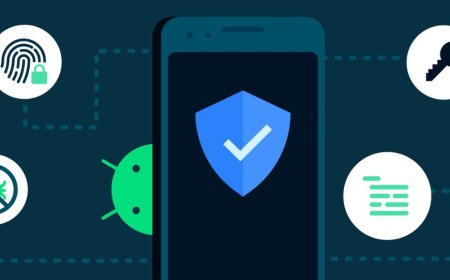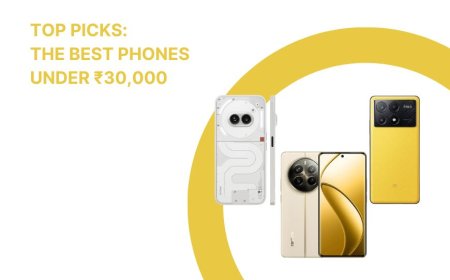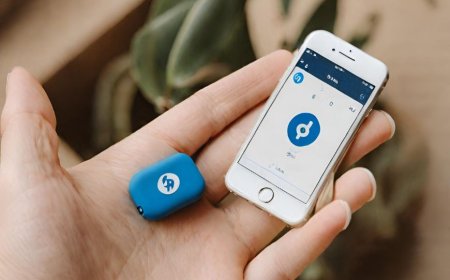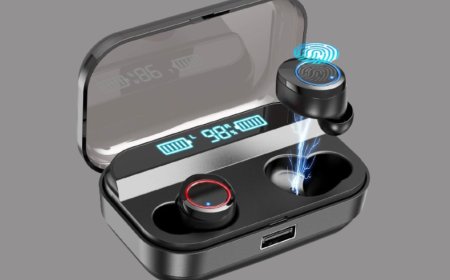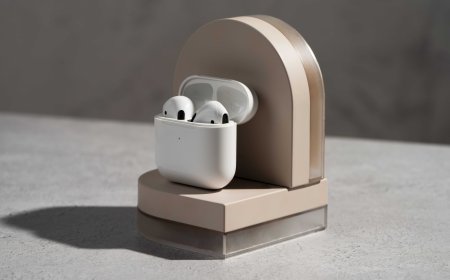How to Connect Wireless Earbuds
Discover the best wireless earbuds for a seamless audio experience. Explore Tectoks' guide on how to connect wireless earbuds effortlessly.
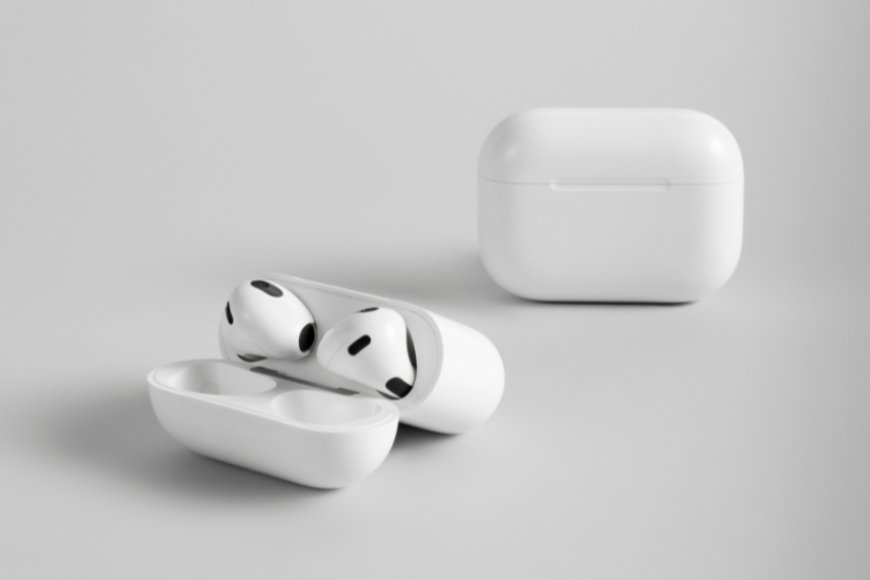
Table of Contents:
-
Introduction
-
How to Pair Wireless Earbuds
-
Wireless Earbud Instructions
-
Setting Up Wireless Earbuds
-
Syncing Wireless Earbuds
-
Best Wireless Earbuds
-
Conclusion
1. Introduction
Wireless earbuds are small devices that fit in your ears and connect to your smartphone, tablet, laptop, or other devices via Bluetooth. They allow you to listen to music, podcasts, and audiobooks, or make phone calls without any wires or cords. Wireless earbuds are becoming more and more popular among people who value convenience, portability, and sound quality.
Some of the benefits of wireless earbuds are:
-
Convenience: You don’t have to deal with tangled wires or cords that can get in your way or limit your movement. You can also easily switch between different devices or activities with a simple tap or voice command.
-
Portability: You can carry your wireless earbuds anywhere you go, as they are lightweight and compact. You can also store them in a small case that can also charge them when not in use.
-
Sound quality: Wireless earbuds can deliver high-quality sound that can block out external noise and enhance your listening experience. You can also adjust the volume, bass, treble, or equalizer settings according to your preference.
The main purpose of this blog post is to teach you how to connect wireless earbuds to your devices. Whether you are a beginner or an expert, you will find this guide helpful and easy to follow. By the end of this post, you will be able to enjoy your wireless earbuds without any hassle.
2. How to Pair Wireless Earbuds
Pairing is the process of establishing a wireless connection between your wireless earbuds and your device. It is necessary to pair your wireless earbuds before you can use them, as it allows them to communicate and exchange data with your device.

The pairing process may vary slightly depending on the model and brand of your wireless earbuds and your device, but the general steps are:
-
Turn on your wireless earbuds by pressing and holding the power button or placing them in your ears, depending on the design of your earbuds. You should hear a voice prompt or see an LED indicator that confirms that your earbuds are on and ready to pair.
-
Enable Bluetooth on your device by going to the settings menu and turning on the Bluetooth option. You should see a list of Bluetooth devices that are nearby.
-
Choose your wireless earbuds from the list of devices available. You may need to enter a passcode or confirm the pairing request, depending on the security settings of your device. You should hear a voice prompt or see an LED indicator that confirms that your earbuds are successfully paired with your device.
Some tips and tricks to make the pairing process easier are:
-
Check the battery level of your wireless earbuds and your device before pairing. Make sure they have enough charge to complete the pairing process and avoid any interruptions.
-
Keep your wireless earbuds close to your device during the pairing process. The Bluetooth signal may be weak or unstable if there is too much distance or interference between them.
-
Follow your wireless earbuds' and your device's voice prompts or LED indicators. They will guide you through the pairing process and notify you of any errors or issues. You can also refer to the user manual of your wireless earbuds and your device for more detailed instructions and troubleshooting tips.
3. Wireless Earbud Instructions
Once you have paired your wireless earbuds with your device, you can use them to enjoy your favorite audio content or make phone calls.
Here are some of the basic instructions on how to use your wireless earbuds:
-
Adjusting the volume: You can adjust the volume of your wireless earbuds by using the volume buttons on your device or by using the touch controls on your earbuds, if they have them. Some earbuds may also have a voice command feature that allows you to adjust the volume by saying “volume up” or “volume down”.
-
Playing or pausing music: You can play or pause your music by using the play/pause button on your device or by using the touch controls on your earbuds, if they have them. Some earbuds may also have a voice command feature that allows you to play or pause your music by saying “play” or “pause”.
-
Answering/rejecting calls: You can answer or reject incoming calls by using the answer/end button on your device or by using the touch controls on your earbuds if they have them. Some earbuds may also have a voice command feature that allows you to answer or reject calls by saying “answer” or “reject”.
-
Skipping/rewinding tracks: You can skip or rewind tracks by using the skip/rewind buttons on your device or by using the touch controls on your earbuds, if they have them. Some earbuds may also have a voice command feature that allows you to skip or rewind tracks by saying “next” or “previous”.
Wireless earbuds come with different features and functions that can enhance your listening experience.
Some of the common features and functions are:
-
Noise cancellation: Noise cancellation is a feature that reduces or eliminates the background noise around you, allowing you to hear your audio content more clearly and without any distractions. You can activate or deactivate the noise cancellation feature by using the noise cancellation button on your earbuds or by using the touch controls or voice commands if they have them.
-
Touch controls: Touch controls are sensors on your earbuds that allow you to control your audio content or phone calls by tapping or swiping on your earbuds. You can customize the touch controls according to your preference by using the app that comes with your earbuds or by following the instructions in the user manual.
-
Voice assistants: Voice assistants are software programs that can perform various tasks or answer questions for you by using voice commands. You can access the voice assistant feature by using the voice assistant button on your earbuds or by using the touch controls or voice commands if they have them. You can use the voice assistant feature to play music, make calls, check the weather, set reminders, and more.
Wireless earbuds are delicate devices that require proper care and maintenance to ensure their longevity and performance.
Here are some of the safety and maintenance advice that you should follow:
-
Avoid water damage: Wireless earbuds are not waterproof unless they are specifically designed to be. You should avoid exposing your wireless earbuds to water or moisture, such as rain, sweat, or spills. If your wireless earbuds get wet, dry them immediately with a soft cloth and let them air dry before using them again.
-
Clean the earbuds regularly. Wireless earbuds can accumulate dirt, dust, wax, or bacteria over time, which can affect their sound quality and hygiene. You should clean your wireless earbuds regularly by using a soft cloth, a cotton swab, or a cleaning tool that comes with your earbuds. You should also replace the ear tips or cushions periodically if they are removable and washable.
-
Store them in a case. Wireless earbuds are small and easy to lose or damage. You should store your wireless earbuds in a case when you are not using them, preferably the case that comes with your earbuds. The case can also charge your wireless earbuds when they are low on battery if it has a built-in battery. You should also keep the case in a cool, dry place, away from direct sunlight or heat sources.
4. Setting Up Wireless Earbuds
Setting up wireless earbuds is a simple process that allows you to enjoy your favorite music, podcasts, or videos without the hassle of wires. Wireless earbuds use Bluetooth technology to connect to your device, such as a smartphone, tablet, laptop, or TV. Wireless earbuds are a type of wireless headphones that fit inside your ears, while wireless headphones are larger and cover your ears completely. Both have their advantages and disadvantages, depending on your preferences and needs.

Some of the similarities and differences between wireless earbuds and wireless headphones are:
-
Both wireless earbuds and wireless headphones offer portability and convenience, as you don’t have to deal with tangled wires or plug them into your device.
-
Both wireless earbuds and wireless headphones require charging, as they have built-in batteries that power them. The battery life may vary depending on the model and usage, but generally, wireless headphones have a longer battery life than wireless earbuds.
-
Both wireless earbuds and wireless headphones can deliver high-quality sound, but the sound quality may also depend on the codec, driver, and design of the headphones. Some wireless headphones support advanced codecs, such as aptX or LDAC, that can transmit higher-resolution audio over Bluetooth. Some wireless headphones also have larger drivers, which can produce more powerful bass and volume. Some wireless headphones also have active noise cancellation (ANC), which can block out external noise and enhance your listening experience.
-
Wireless earbuds are more compact and lightweight than wireless headphones, which makes them easier to carry around and store. Wireless earbuds are also more discreet and less noticeable than wireless headphones, which may be preferable for some people.
-
Wireless headphones are more comfortable and stable than wireless earbuds, as they have cushioned earpads that fit around your ears and a headband that secures them in place. Wireless headphones are also less likely to fall out or get lost than wireless earbuds, which may be an issue for some people.
-
Wireless headphones are more suitable for indoor and stationary use, as they are bulkier and heavier than wireless earbuds. Wireless headphones may also interfere with glasses, earrings, or hats, which may be uncomfortable for some people.
-
Wireless earbuds are more suitable for outdoor and active use, as they are smaller and lighter than wireless headphones. Wireless earbuds are also more resistant to sweat and water than wireless headphones, which may be important for some people.
To connect wireless earbuds to your device, you need to follow these steps:
-
Turn on your wireless earbuds and put them in pairing mode. This usually involves pressing and holding a button or switching on the earbuds until you see a flashing light or hear a sound. You can check the manual for your earbuds for specific instructions.
-
Turn on Bluetooth on your device and go to the Bluetooth settings. You can usually find this in the Settings app or the Control Center of your device. You can also search for Bluetooth in the search bar of your device.
-
Scan for available Bluetooth devices and select your wireless earbuds from the list. You may need to enter a code or confirm the pairing on your device or headphones. The code is usually 0000 or 1234, but you can check the manual of your earbuds for the specific code.
-
Wait for the pairing to complete and enjoy your wireless earbuds. You should see a confirmation message or hear a sound on your device's earbuds. You should also see a battery indicator or a connection status on your device earbuds.
Some examples of the best wireless earbuds on the market are:
-
Sony WH-1000XM5: These are the best wireless headphones available, as they have exceptional ANC, a supremely comfortable fit, LDAC codec support, great battery life, and convenient features like Multipoint and Quick Attention.
-
Bose 700: These are the best wireless headphones for calls, as they have an eight-microphone array that delivers crystal-clear voice quality and noise cancellation. They also have a sleek design, touch controls, and Bose AR support.
-
Apple AirPods Pro: These are the best wireless earbuds for Apple users, as they have seamless integration with iOS devices, ANC, spatial audio, wireless charging, and a compact design. They also have a force sensor, adaptive EQ, and transparency mode.
-
Samsung Galaxy Buds Pro: These are the best wireless earbuds for Android users, as they have a snug fit, ANC, ambient sound, wireless charging, and a stylish design. They also have a dual-driver system, 360-degree audio, and Bixby support.
5. Syncing Wireless Earbuds
Syncing wireless earbuds means connecting them to each other and to a device that can play audio, such as a smartphone, tablet, laptop, etc. Syncing is important because it allows you to enjoy wireless audio without wires or cables and to switch between different devices without having to reconnect every time.

To sync wireless earbuds to multiple devices, you need to follow these steps:
-
Turn on your wireless earbuds and set them in pairing mode. This usually involves pressing and holding a button or switching on the earbuds until you see a flashing light or hear a sound. You can check the manual for your earbuds for specific instructions.
-
Turn on Bluetooth on your first device and go to the Bluetooth settings. You can usually find this in the Settings app or the Control Center of your device. You can also search for Bluetooth in the search bar of your device.
-
Scan for available Bluetooth devices and select your wireless earbuds from the list. You may need to enter a code or confirm the pairing on your device or earbuds. The code is usually 0000 or 1234, but you can check the manual of your earbuds for the specific code.
-
Wait for the pairing to complete and enjoy your wireless earbuds. You should see a confirmation message or hear a sound on your device or earbuds. You should also see a battery indicator or a connection status on your device or earbuds.
-
To sync your wireless earbuds to another device, you need to enable the multipoint feature on your earbuds if they support it. This feature allows you to connect your earbuds to two devices simultaneously and switch between them easily. You can check the manual for your earbuds for specific instructions on how to enable multipoint.
-
If your earbuds do not support multipoint, you need to disconnect them from the first device before connecting them to the second device. You can do this by turning off Bluetooth on the first device or by selecting the option to forget or unpair your earbuds from the Bluetooth settings. You can also turn off your earbuds and turn them on again to enter pairing mode.
-
Repeat steps 2 to 4 for the second device. You may need to select your earbuds from the list of previously paired devices instead of scanning for new ones.
Some benefits and challenges of syncing wireless earbuds include:
-
Benefits:
-
Convenience: Syncing wireless earbuds gives you the freedom to listen to audio without wires or cables and to move around without being restricted by your device. You can also switch between different devices without having to reconnect every time if your earbuds support multipoint.
-
Functionality: Syncing wireless earbuds can also offer some unique features, such as active noise cancellation (ANC), which can block out external noise and enhance your listening experience. Some wireless earbuds also support advanced codecs, such as aptX or LDAC, that can transmit higher-resolution audio over Bluetooth. Some wireless earbuds also have touch-sensitive controls, voice assistants, or ambient sound modes that can improve your user experience.
-
Challenges:
-
Compatibility: Syncing wireless earbuds requires that your devices are Bluetooth-enabled and share the same codecs and Bluetooth profiles. Some devices may not support certain codecs or profiles, which can affect the sound quality or functionality of your earbuds. For example, some devices may not support aptX or LDAC, which can reduce the audio resolution of your earbuds. Some devices may also not support the hands-free profile (HFP), which can prevent you from making or receiving phone calls with your earbuds.
-
Interference: Syncing wireless earbuds can also be affected by interference from other wireless devices or signals, such as Wi-Fi, microwaves, or cordless phones. This can cause audio dropouts, stuttering, or distortion, which can ruin your listening experience. To avoid interference, you should keep your devices close to your earbuds and avoid using them in crowded or noisy environments. You should also update your devices and earbuds to the latest firmware, which can improve their performance and stability.
6. Best Wireless Earbuds
Wireless earbuds are a great way to enjoy your music, podcasts, or calls without the hassle of tangled wires. They connect to your devices via Bluetooth, which means you can move around freely and still hear your audio clearly. Wireless earbuds also come in different shapes, sizes, and features, so you can find the best ones for your needs and preferences.
Some of the factors to consider when choosing wireless earbuds are:
-
Price: Wireless earbuds can range from very cheap to very expensive, depending on the brand, quality, and features. You should set a budget and look for earbuds that offer the best value for your money.
-
Quality: Wireless earbuds should have good sound quality, noise cancellation, and microphone quality. You should also check the reviews and ratings of other users to see how they perform in real-life situations.
-
Design: Wireless earbuds should fit comfortably and securely in your ears and not fall out easily. You should also look for earbuds that match your style and personality and have easy-to-use controls and indicators.
-
Battery life: Wireless earbuds should have enough battery life to last you through your daily activities and come with a charging case that can extend their usage time. You should also look for earbuds that support fast charging and wireless charging, if possible.
Based on these factors, here are some of the best wireless earbuds on the market that you can check out:
-
Apple AirPods Pro: These are the best wireless earbuds for iPhone users, as they have seamless integration with iOS devices and offer excellent noise cancellation, sound quality, and battery life. They also have a sleek and ergonomic design and support wireless charging. They cost $245 at Amazon.
-
Samsung Galaxy Buds Pro: These are the best wireless earbuds for Samsung users, as they have tight integration with Galaxy devices and offer superb noise cancellation, sound quality, and battery life. They also have a stylish and durable design and support wireless charging. They cost $200 at Amazon.
-
Jabra Elite 75t: These are the best wireless earbuds for sports and fitness enthusiasts, as they have a secure and comfortable fit and offer great noise cancellation, sound quality, and battery life. They also have a rugged and water-resistant design and support fast charging. They cost $130 at Amazon.
These are just some of the best wireless earbuds that you can find on the market. You can also explore other options and compare them based on your own criteria. You can use the technology search results and the shopping search results from my tool to help you with your research. I hope this helps you find the best wireless earbuds for you.
7. Conclusion
That’s all for this blog post on the best wireless earbuds. I hope you learn something new and useful from it. Thank you for your time and attention.
If you have any feedback, questions, or suggestions, please feel free to share them in the comments section below. I would love to hear from you and enhance my content.
If you enjoyed this blog post and want to read more like it, please subscribe to my blog or follow me on my social media accounts. You can find the links at the bottom of this page. I will keep you updated with the latest news and information on technology, gadgets, and more.
Have a great day and happy listening!
What's Your Reaction?







